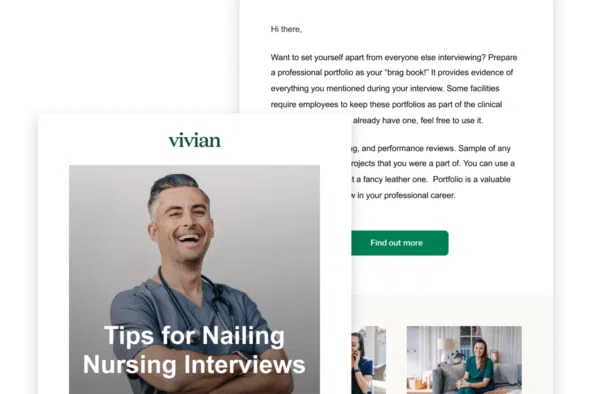Since the introduction of the electronic health record (EHR) and new health laws, including Obamacare and HIPAA, nurses have to spend a lot more of their time charting. In healthcare, there’s a saying: “If you didn’t chart it, it didn’t happen.” Nurses are under a lot of pressure to chart their work thoroughly, so they don’t get in trouble. It’s difficult to balance in-depth charting while also trying to give your patients excellent care.
Surveys have shown nurses spend three of their 12 hours at work charting. This amounts to about 25% of every shift and over nine hours per week. Nurses typically don’t have three hours to spend on the computer. Try integrating these charting tips and tricks for nurses to help you finish your charting and get home on time.
Time-Saving Charting Tips
As a nurse, you chart in many places. Here are a few changes you can make that help decrease the time you spend charting so you’re done at shift change and going home right away.
1. Make Templates
Templates are lifesavers for things like free-text notes. You can create templates for certain complaints, exams, and patient plans. This prevents you from having to type the same thing over again. Instead, you use your premade template and insert the relevant patient information. It saves a ton of time!
For example, your plan for a patient with an upper respiratory infection you see this week probably isn’t different from the one you saw last week. If you have a saved template, you can copy and paste details into your note, and you’re done with minutes to spare.
2. Chart as You Go
Some nurses prefer to do all their charting at the end of the shift; however, this is a proven ineffective time management technique. You never know how much time you’ll have at the end of a shift or if something will interrupt you, making you have to stay late to finish. So, chart as you go!
Almost all healthcare facilities now have computers in patient rooms, whether in the hospital room or the exam room in outpatient clinics. Chart as you’re talking to your patient. Chart your assessment as you go, or your plan as you go – anything and everything as you go. Then, when you move on to the next patient, you know all your charting is done, and you don’t have to sit down and do it afterward.
3. Chart Abnormals on Exams Immediately
If you don’t have time to chart your entire assessment in the room with a patient, just chart the abnormals. When you have time to catch up, you’ll know everything else was normal, and you can often click things like “all normal” which helps speed things along.
4. Use Automated Nurse Charting Resources
Know what resources you have. For example:
- Can you save templates?
- Are there shortcuts you don’t know?
- Is there a way to click on more things faster, like clicking a whole row instead of each category?
- Are there shortcuts you can learn from co-workers?
Learn all of these techniques and start using them. They save time and are there for a reason.
5. Use Keyboard Shortcuts
This one may be a no-brainer, but use keyboard shortcuts like cut and paste. Copy old notes if you want to use most of them, then change a few things using the keyboard shortcuts. This saves time because you don’t have to go in and click on something, then go click on something else and on and on.
6. Delegate
You don’t have to do all the charting yourself. Have your medical or nursing assistant chart things like vital signs, chief complaints, patient histories, and intake and output. You can always go back and check that those are in, but you don’t have to spend time doing the task or the charting.
7. Time Yourself
Time yourself and only allow a certain amount of time for each piece of charting. This is especially helpful when writing narrative notes. Tell yourself, “I’m only going to spend five minutes on this.” Set the timer and stick to it. Don’t sit there and stress out about perfecting the note past that time frame.
Done is better than perfect, which leads to our final tip…
8. Be Okay with a B+
Your chart doesn’t need to be perfect. It needs to be accurate, and you must be sure to document any interventions you did or anything abnormal you found – but everything else does NOT need to be perfect. The next nurse or provider just needs to understand your plan and how the patient was when you took care of them. They don’t need every little detail of your shift. Having A+ charts is unrealistic. Learn to be okay with B+ charting and leave it at that.
Ready to Get Home on Time?
Next time you’re working, try at least one of these tips and slowly integrate them all. They’ll save you so much time every single day. It creates more time you can spend with your patients, giving them nursing care – instead of worrying about charting everything perfectly. Always remember, done is better than perfect. You deserve to go home on time.
With all the demands on your time, it’s important to stay focused. Check out our related article, How to Avoid Common Time Management Pitfalls in Nursing, for even more tips.










What are some books you have written?
Thanks for reaching out, Angela! Alison Shely, DNP, FNP-C, is a guest blogger for Vivian. She writes nursing-related articles and blogs for various publications.